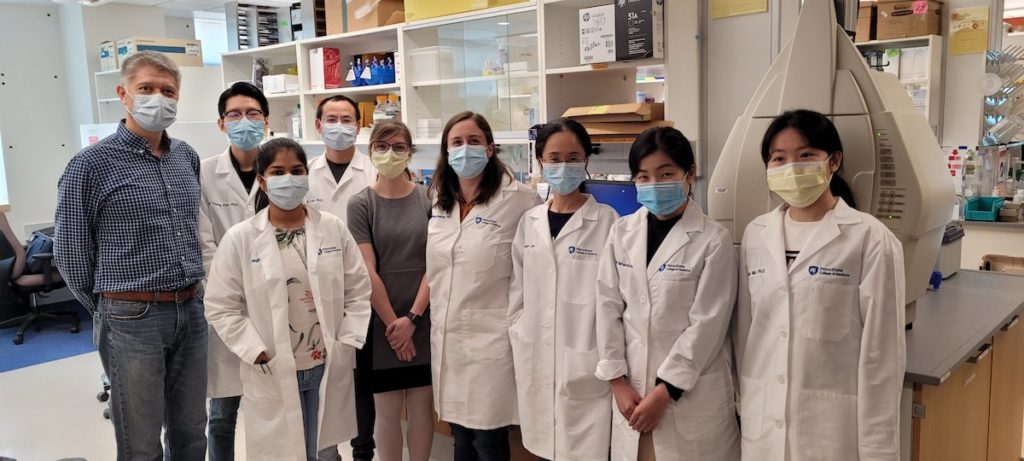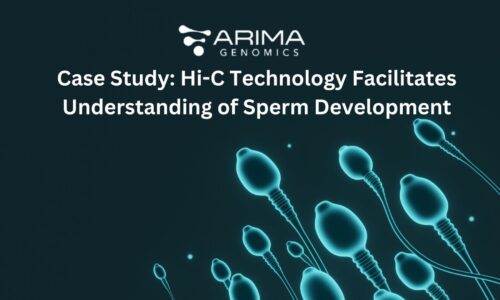June 7, 2021
Share
Huang Lab, Penn State: Understanding the role of long non-coding RNA in 3D genome organization in leukemia
Research Objective
“Our lab is interested in the role of long non-coding RNAs (lncRNAs) in coordinating genome organization and gene expression programs in hematologic malignancies. CTCF and cohesin cooperate to establish and maintain three-dimensional (3D) genome organization, forming enhancer-promoter loops and topologically associated domains (TADs). Recently, we found that the lncRNA, HOTTIP, recruits CTCF/cohesin complexes to coordinate TAD formation at several oncogenic loci. The HOTTIP-mediated alterations in chromatin structure result in transcriptional changes essential for leukemogenesis. We believe this phenomenon of lncRNA-dependent, CTCF/cohesin-mediated genome organization extends beyond HOTTIP and may be relevant for myriad lncRNAs.
We will be using the Arima HiChIP kit to explore CTCF/cohesin-mediated chromatin looping and 3D genome organization in an RNA-dependent manner in leukemic cell lines and primary patient tissues. These studies will further elucidate the molecular mechanisms by which malignant 3D genome organization drives leukemogenesis and may lead to novel therapeutic avenues,” said Dr. Melanie Eshelman

The Huang Lab, Penn State Health Children’s Hospital.
The scope of Liang Xu’s project outlines ambitious goals that should provide biological and mechanistic insights into the interactions between enhancers, super-enhancers, promoters and their variants as well as open up the opportunity to gain clinical insights into their brain tumor samples. The breadth of existing data sets that will be integrated with theH3K27ac HiChIP data elevated the impact of the project to be chosen as a recipient of the Arima Genomics research grant.
Understanding interactions between enhancers and promoters in glioblastoma: Xu Lab, Zhejiang University & University of Singapore
Research Objective
“Glioblastoma (GBM) is the most aggressive and devastating brain tumor in adults. Current molecular profiling of GBM mainly focuses on gene expression, DNA methylation and genomic variations. The enhancer architectures governing tumor-intrinsic transcriptional diversity and subtype identity are still elusive. We have mapped genome-wide H3K27ac deposition across a large cohort of GBM tumour biopsies, normal brain tissues and cell line counterparts. Analyses of differentially regulated enhancers, especially super-enhancers between GBM and normal brain tissues, as well as among GBM samples with matched RNA-sequencing data, uncovered previously unrecognized layers of inter-tumour heterogeneity. Integrative analysis of variant enhancer loci and transcriptome identified topographies of transcriptional enhancers among molecular subtypes of primary tumours. Therefore, through profiling of transcriptional enhancers, we provide clinically relevant insights into molecular classification and pathogenesis of GBM. Our data also serve as a valuable resource to the research community to explore epigenetic mechanisms underlying GBM and normal brain activities.

Dr. Liang Xu, Zhejiang University
Moving forward, we would like to improve the enhancer to gene annotation by performing H3K27ac HiChIP in both GBM cell lines and primary tissues. We have already conducted H3K27ac ChIP-seq and RNA-seq on these samples, and the inclusion of enhancer-enhancer and enhancer-promoter interaction data will greatly refine the epigenetic and molecular analyses already performed. This effort will provide clinically relevant insights into molecular classification and pathogenesis of GBM,” said Dr. Liang Xu
The scope of Liang Xu’s project outlines ambitious goals that should provide biological and mechanistic insights into the interactions between enhancers, super-enhancers, promoters and their variants as well as open up the opportunity to gain clinical insights into their brain tumor samples. The breadth of existing data sets that will be integrated with theH3K27ac HiChIP data elevated the impact of the project to be chosen as a recipient of the Arima Genomics research grant.
Understanding interactions between enhancers and promoters in glioblastoma: Swapan Nath, Oklahoma Medical Research Foundation
Research Objective
“Systematic lupus erythematosus (SLE or lupus) is a debilitating autoimmune disease, characterized by abnormal immune cell response. While the etiology of SLE is incompletely understood, a substantial genetic contribution is well established. Therefore, genetic studies have the potential to delineate the pathogenic mechanisms of SLE. Several genome-wide association studies (GWAS) have identified over 100 SLE predisposing loci, mostly defined by single nucleotide polymorphisms (SNPs). Recent studies highlighted GWAS loci are enriched within regulatory elements (i.e., enhancers), likely to modulate target gene expression. Even though they are thought to play a role in gene regulation, it is unclear which genes they regulate and in which cell types or physiological contexts.
To systematically delineate the regulatory SNPs (rSNPs) and their impact on target genes, we propose to apply HiChIP experiments in human primary immune cells, relevant to SLE (T-cells and B-cells). This will gives us a 3D view of our sequence data which can directly associate rSNPs in distal regulatory sequences with the transcriptional targets that they regulate. Discovery of rSNPs and their target genes will significantly advance our knowledge of SLE genetics, and yield directions for future in-depth mechanistic research for understanding lupus susceptibility,” said Dr. Swapan Nath.

Dr. Swapan Nath, OMRF.
The project from Swapan Nath was chosen as a recipient of an Arima Genomics research grant because it exemplifies the need to connect disease susceptibility loci that were identified in GWAS studies with their respective interacting — and therefore regulatorily influencing — loci irrespective of their genomic linear distance. The planned use of primary immune cells to study an important human disease that has few options to intervene led us to choose this project for the research grant.



